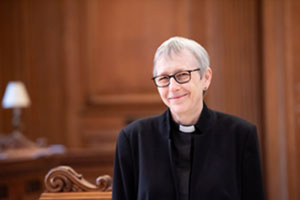Back in February – which seems a very long time ago now (I suspect that for all of us these days the ‘old normal’ is starting to feel like an increasingly distant memory) – back in February I preached a sermon in which I referred to the origins of the mediaeval Guild of St Bride, which was established here in the year 1375. One of the principal functions of that parish Guild was to keep a light burning before the statue of St Bridget the Virgin – our patron saint, St Bride.
As some of you will be aware, during this difficult period, when our doors have been locked and public worship here, and in churches throughout the land, has had to cease due to the pandemic, I, too, have been keeping a candle burning here. And in lighting it each day, I have felt a strangely powerful connection with those mediaeval Guildsmen, and indeed, with all those who, across the centuries, have kept the light of Christ alive here, throughout some of the most turbulent and tumultuous times of our nation’s history.
What you will not know, is that the candles I have been lighting here each day I am taking from the large box of votive lights that in any normal year we would have given to congregation members at our Dawn Service this morning, on Easter Day. It is the service at which we kindle the Easter fire, and bless and light our new Paschal candle, from which members of the congregation light their own individual candles. We gather round the Paschal candle, still in darkness, holding our lit candles as the resurrection of Christ is proclaimed, and the Exsultet, the Easter hymn of praise, is sung by a solo voice:
Rejoice, heavenly powers; sing choirs of angels;
rejoice all creation around God’s throne,
Jesus Christ our king is risen. Sound the trumpet of salvation!
During these dark and difficult days, it has somehow felt very significant that the specific candles I have been lighting here as a sign of continuing hope, and continuing prayer, contain within them that symbolic connection with the Easter message and its promise of new life the other side of darkness.
Many of you have been able to join our worship during the period when our doors have been closed, and throughout Holy Week, by listening at home to the special services we have been making available through our website.
Thanks to the extensive archive of recorded services that we have here, we have been able to construct acts of worship that combine recordings from the past, with new spoken material – prayers and sermons – which speak to our situation in the present day.
Indeed, during your Easter Sunday lunch today, you might like to raise a glass to Matthew Morley and Neil Bellingham who are the two people who have worked tirelessly to make that extraordinary feat happen – we really are much in their debt.
Listening to these services it has been wonderfully cheering to hear recordings of the St Bride’s congregation worshipping together, as we do, Sunday by Sunday, during normal times. But during Holy Week an extraordinary thought struck me. The recordings of our congregation singing hymns and joining in the liturgy are drawn from a range of services from the past, some very recent, others from longer ago. And I suddenly realised that amongst the voices we are hearing, singing and praying, will be those of some much-loved congregation members who are sadly no longer with us, because they have passed away. You may have known some of them. The present pandemic has already claimed at least one of our church family, and sadly there will doubtless be more.
So I find it both profoundly moving and extraordinarily wonderful to realise that this Easter we are celebrating the resurrection of Christ from the dead, with the voices of both the living and the dead joined together in praise and thanksgiving. What could be more appropriate than that? Seen in this light, it really does feel as if when we hear the recordings of our congregational hymns, we really are listening to the communion of saints bound together in worship – itself a small foretaste of the heavenly kingdom that awaits us. Amazing isn’t it!
Throughout Holy Week we explore all of the most significant and profound realities of human life: betrayal, tragedy, desolation; death; and then life, joy – and a new hope when Easter dawns that we discover, not in spite of the darkness that overshadows human life but which emerges from the very heart of that darkness. All of these powerful themes are woven together into a seamless robe. And in fact, how could it be otherwise? For you cannot have a resurrection unless you first have a death.
Like many clergy of my own vintage, I was profoundly shaped by a book first published in 1977 by W.H. Vanstone, called Love’s Endeavour, Loves Expense. It concludes with an extraordinary poem that was subsequently revised and turned into a hymn – a hymn that we sang in the service that we shared online on the evening of Passion Sunday. The poem begins as a celebration of the wonder of God’s love, which we can see in the world around us: in the gift of Creation and in the very best kinds of human creativity and endeavour; but it then turns its attention to another, very different kind of gift – a very different kind of love – which is more extraordinary still, yet hidden. The words of the hymn version of Vanstone’s poem are these:
Morning glory, starlit sky,
Soaring music, scholars truth,
Flight of swallows, autumn leaves,
Memory’s treasure, grace of youth;
Open are the gifts of God,
Gifts of love to mind and sense;
Hidden is love’s agony;
Love’s endeavour, love’s expense.
Love that gives, gives ever more,
Gives with zeal, with eager hands,
Spares not, keeps not, all outpours,
Ventures all, its all expends.
Drained is love in making full;
Bound in setting others free;
Poor in making many rich;
Weak in giving power to be.
Therefore He who shows us God
Helpless hangs upon the tree;
And the nails and crown of thorns
Tell of what God’s love must be.
Here is God: no monarch he,
Throned in easy state to reign;
Here is God, whose arms of love
Aching, spent, the world sustain.
The light shines on in the darkness, and the darkness cannot overcome it.
Alleluia! Christ is risen! He is risen indeed, Alleluia!
Amen.



